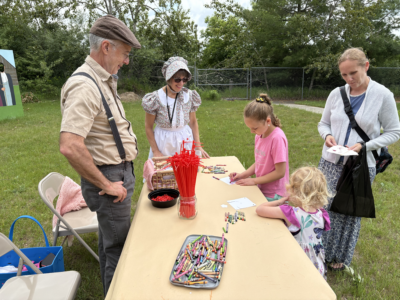‘So long, Alaska’

News Photo by William Kelley “Clyde,” the author’s Cessna 140, is seen at the Homer, Alaska airport in July 1971.
EDITOR’S NOTE: The following is the 37th in a series of stories adapted from William Kelley’s unpublished book, “Wind Socks, Grass Strips, and Tail-Draggers.” Last week, Kelley spent time with new friends in Fairbanks.
I was shown the college campus when Randy had left to work the afternoon shift.
College is 10 miles outside Fairbanks. Because of that, it has its own identity. As is true with most towns associated with a campus, the town was more liberal than the community that surrounded it. That liberalism is just one of the laws of the land.
The dorm provided them a place to live while Carol completed her master’s degree. Being a resident assistant had benefits. It provided some money and a place to live. However, there are kids away from home for the first time who have to be pampered. There were little spats and scraps to settle, and other minor adjustments to make on the dorm population. There was also time for her to be a mom, wife, student, and adviser while they lived there.
That evening, a kid who had been staying with them showed up. We went to supper at the dorm cafeteria, where I became better-acquainted with everyone.
Like me, he had come to Alaska to seek adventure. He hitchhiked to Alaska from New York, where he taught at a private school and was traveling for the summer. I thought my method of travel to Alaska was quaint, but to hitchhike there was definitely a bigger challenge.
When Randy came home from work, the four of us went to the Malemute Saloon and saw a local artist and college teacher perform his rendition of Robert Service’s favorite characters. His rendition of “The Cremation of Sam McGee” and the “Shooting of Dan McGrew” nearly brought down the house. The fellow’s knowledge of Robert Service and his writings was exceptional.
Robert Service was a writer of prose and poetry who dealt with the Yukon and Klondike regions of Alaska and Northwest Canada, associated with the Gold Rush days. He is quite famous in that region.
Obviously, the setting had a lot to do with the success of the actor. Peanut shells strewn ankle-deep over the floor by the patrons crunched when the waitresses, dressed as dance hall girls from Diamond Gerties in Dawson City, brought draft beer and bowls of peanuts to the tables. The actor sat on stage and spit poetry in the direction of dimmed lights and fire on the frozen river. Spirits flowed from bottles and the firebox where Sam McGee roasted. The Gold Rush was alive that night.
We returned to the dorm, no one in the mood for bed after all the excitement down at the Malemute Saloon, so we sat up and talked.
The family was to drive the New Yorker to Haines Junction early next morning, where he planned to hitch a ride on a ferry back to the Lower 48. Just like the days in college, we sat up way past our bedtimes and solved the world’s problems.
Then 4 a.m. came at its normal time. What a time to start the day. Breakfast, a short drive to the airport, and I prepared to head to the Lower 48 myself.
We said our goodbyes, and, by 4:30, I was in the air.
The weather was good, so I hadn’t filed a flight plan. For the most part, the whole course to Northway was over flat ground. Shortly after takeoff, I picked up the Tanana River and followed it as far as Big Delta.
Toward the end of the Alaska experience, everything appeared to happen so fast.
When I went into Alaska, weather stretched the process over two days. For the departure, I just hopped in the plane in the middle of the night, said “so long,” and pointed the plane’s nose for home.
It didn’t seem fair.
Of course, there is no easy way to say goodbye and head for home. After a good visit to any place, when the time comes to leave, there is a package of loneliness that has to tag along for most of the trip home.
The day was already bright at that time of morning. The sky was clear. Here I hoped for a clear day for nearly two weeks so I could photograph the wildlife on McKinley. Now that I was on my way home, the sun shone.
I took advantage of it, however, and just let the plane have the reins.
There was some ground fog in the area of Big Delta, not yet burned off by the morning sun. It was patchy, so I didn’t let it bother me. From Big Delta, I followed the Alaska Highway to Tok Junction.
The trip took 2.7 hours, so, when I reached Northway, it was only 7:15.
There was no activity around Northway when I arrived, so I checked with Flight Service, which is open 24 hours a day. The weather was good all the way to the Washington border. I had no weather worries.
The lodge opened for business an hour after I arrived. When the tanks were topped off, I had a cup of coffee and departed Northway.
“So long,” I said to Alaska, as I taxied to the runway.
Check The News next week for the next installment. William Kelley was a teacher for 32 years and has been a pilot since 1966. He lives in Herron on the family farm where he was born and raised.



